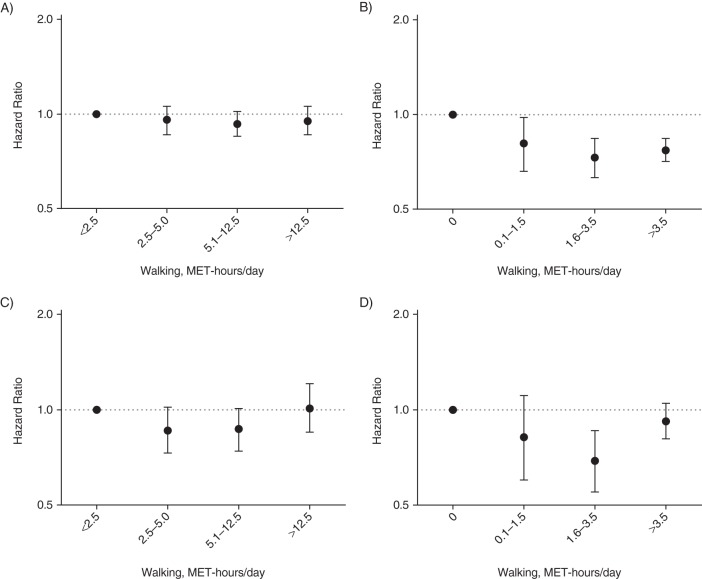Figure 1.
Association between slow and fast walking (metabolic equivalent (MET)-hours/day) and all-cause mortality in blacks and whites, Southern Community Cohort Study, 2002–2011. A) Slow walking in blacks (Ptrend = 0.47); B) fast walking in blacks (Ptrend < 0.01); C) slow walking in whites (Ptrend = 0.26); and D) fast walking in whites (Ptrend = 0.30). The model was adjusted for sex, source of enrollment (community health center or general population), educational level (<9 years, 9–11 years, high school, some college, or beyond college), household income (<$15,000, $15,000–$24,999, $25,000–$49,999, or ≥$50,000), cigarette smoking (never; former, <1 pack/day; former, ≥1 pack/day; current, <1 pack/day; or current, ≥1 pack/day), body mass index (weight (kg)/height (m)2; <18.5, 18.5–24.9, 25–29.9, 30.0–34.9, or ≥35.0), sleep duration (<7, 7–8, or ≥9 hours/day), diabetes (yes or no), employment status (yes or no), sedentary behavior (hours/day), and other types of physical activity (MET-hours/day). Examples of slow walking included “moving around, walking at work, walking the dog, or for light exercise.” Examples of fast walking included “climbing stairs, walking fast to go places, or for exercise.” Bars, 95% confidence intervals.

